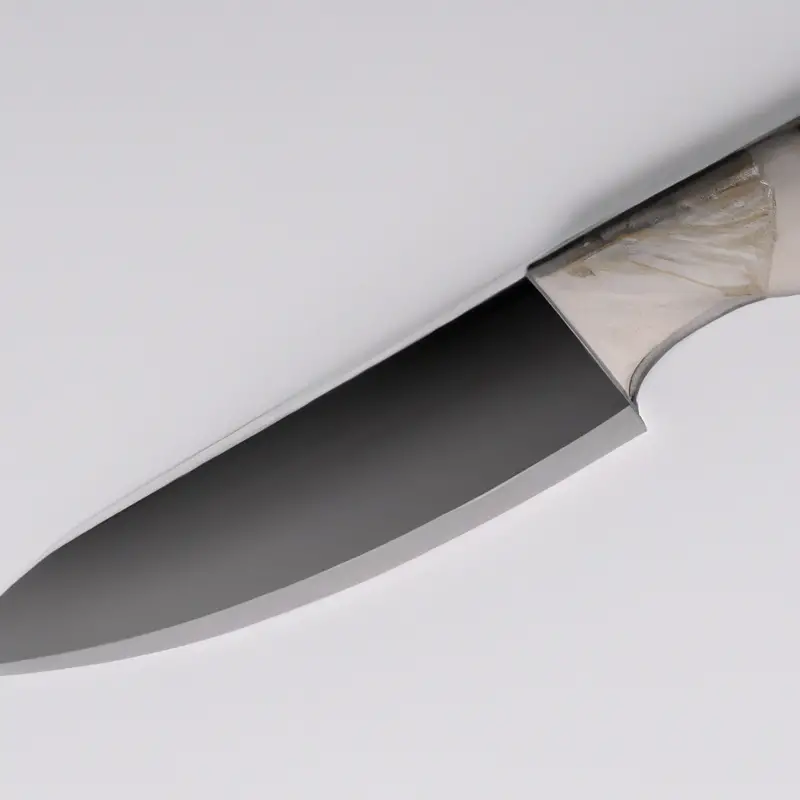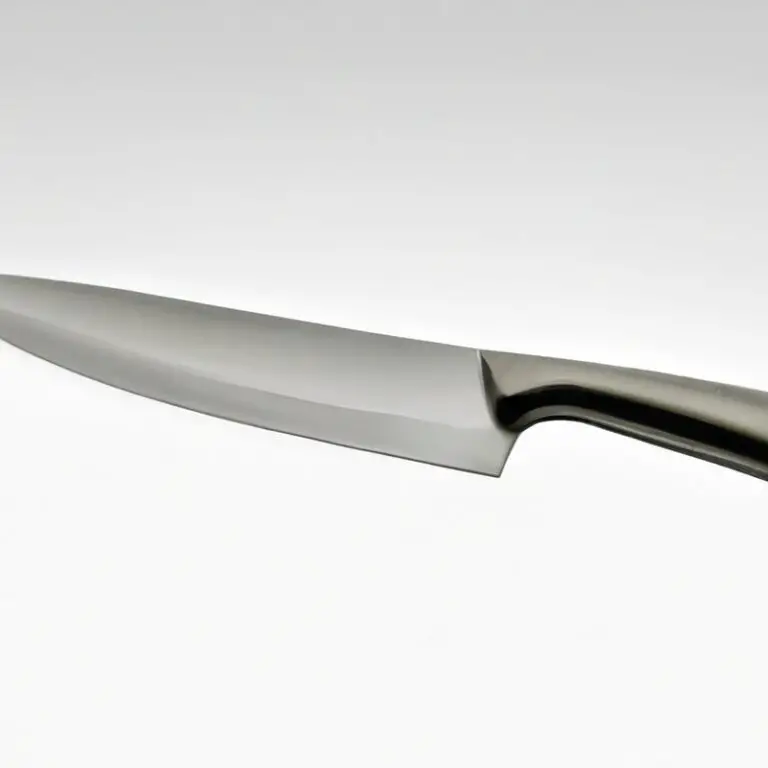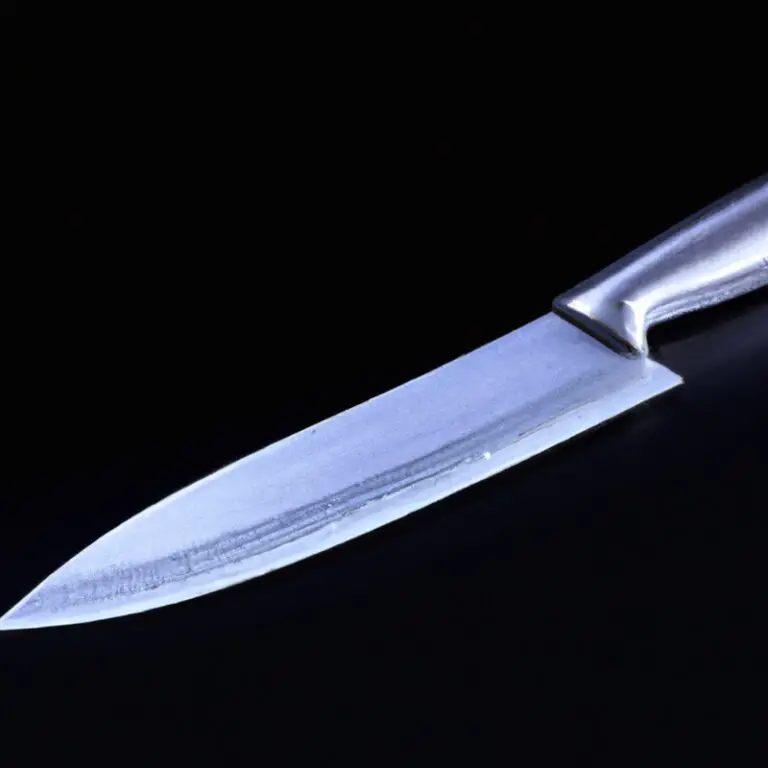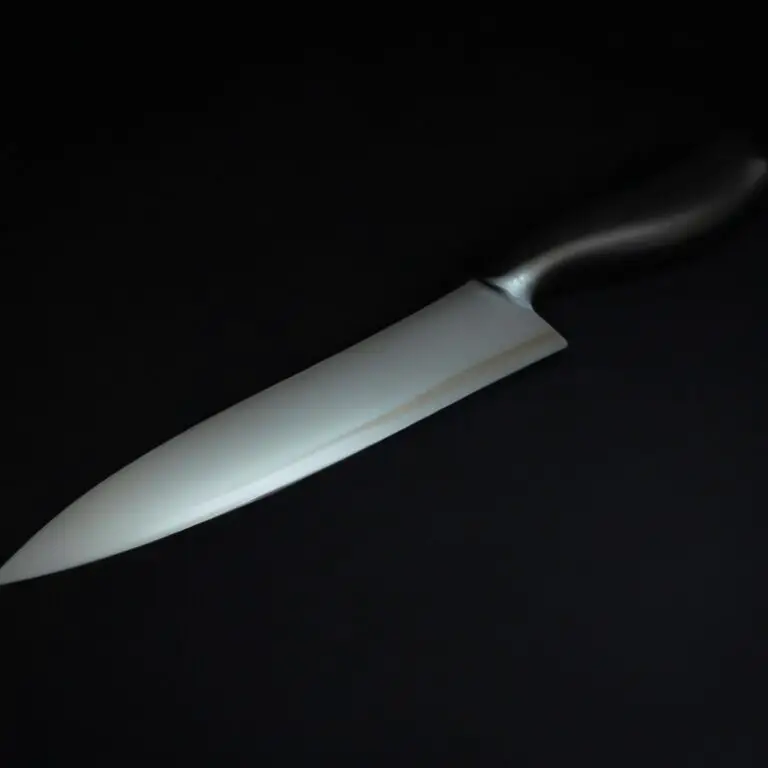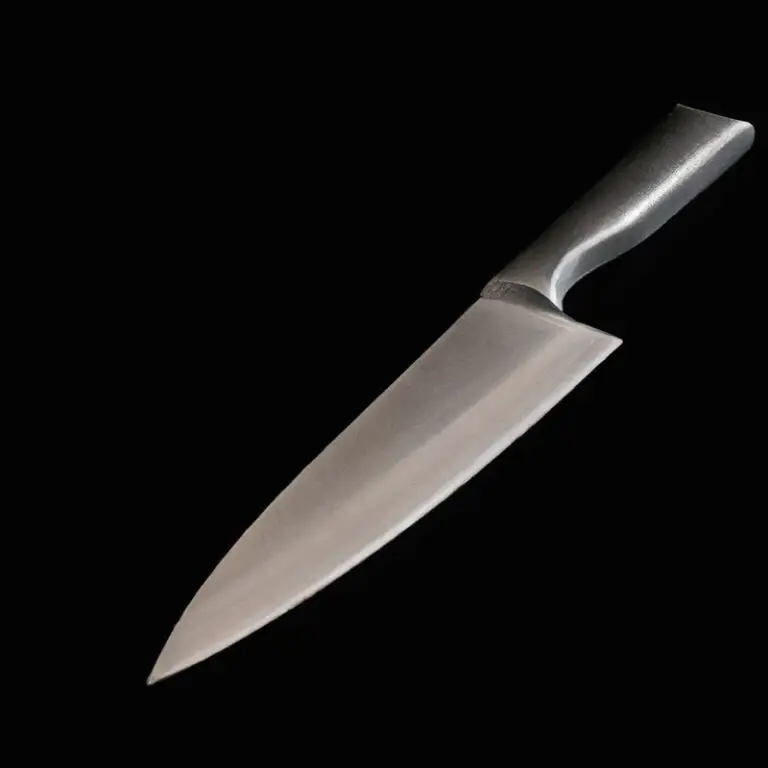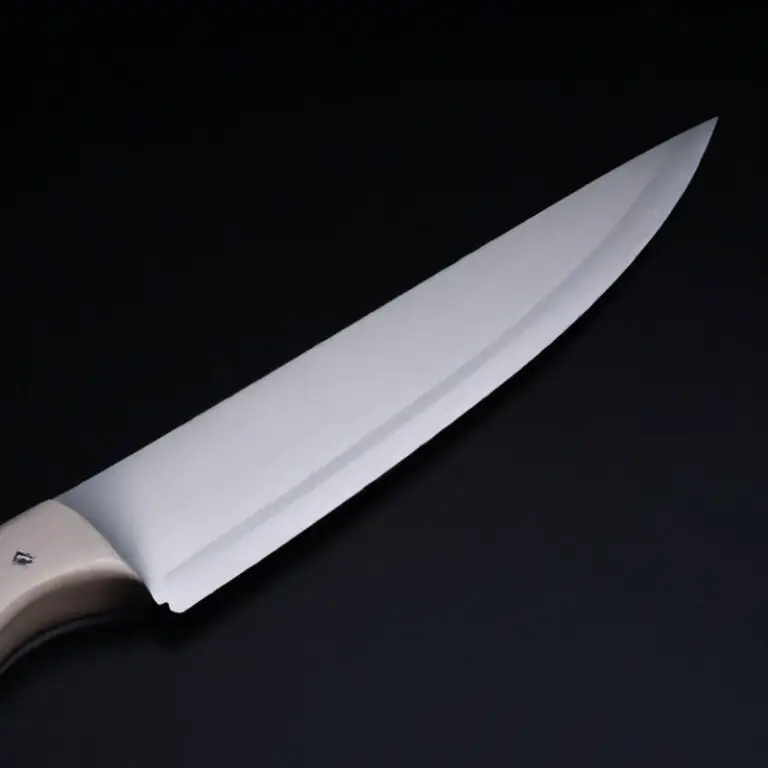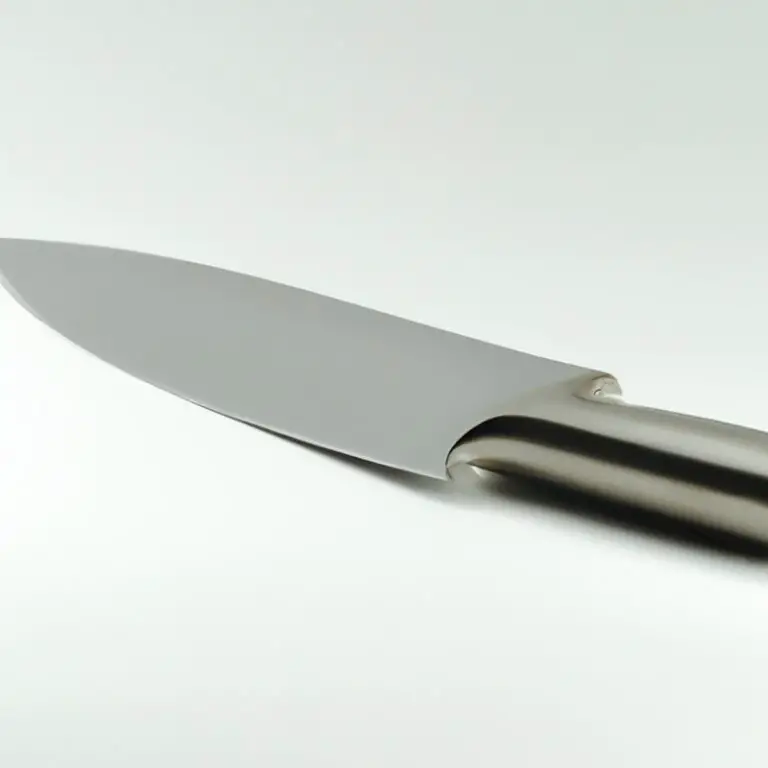Are Santoku Knives Suitable For Cutting Through Soft Cheeses? Slice Away!
Key Takeaways:
- Santoku knives are versatile tools that can be used to cut through a variety of food items, including soft cheeses.
- The blade design of Santoku knives makes them ideal for slicing through soft cheeses with minimal effort.
- When using a Santoku knife to cut soft cheese, it’s important to use a gentle, sawing motion to avoid crushing or smearing the cheese.
- Investing in a high-quality Santoku knife can make a noticeable difference in the ease and precision of cutting soft cheeses in a professional or home kitchen setting.
If you’re a cheese lover, you know the struggle of crumbling and mashing soft cheese while trying to cut it into a perfect slice. But have you considered using a Santoku knife?
These Japanese knives have become increasingly popular in Western kitchens over the years, but are they suitable for soft cheese?
As a culinary expert with years of experience, I can confidently say that Santoku knives are perfect for cutting through soft cheese without destroying its texture and flavor. Let’s delve into the unique design and features of Santoku knives that make them ideal for this task, and how to choose the right one for your kitchen.
| Type of Knife | Suitable for Cutting Soft Cheeses? |
|---|---|
| Santoku Knife | Yes, but with caution |
| Cheese Knife | Recommended |
| Utility Knife | Possible, but not ideal |
| Chef’s Knife | Possible, but not ideal |
What Is A Santoku Knife And How Does It Differ From Other Knives?
A Santoku knife is a Japanese-style knife used for slicing, dicing and chopping. It features a straight blade, unlike the curved blade of a chef’s knife, and has a shorter and wider blade.
This makes it ideal for precise cuts and better control.
The word “Santoku” translates to “three virtues” in Japanese, referring to the knife’s ability to handle meat, fish, and vegetables. Compared to other knives, such as chef’s knives or serrated knives, Santoku knives have a thinner blade, making them ideal for slicing through soft foods like cheese without crushing or mashing them.
Additionally, the blade’s unique design reduces friction with the food, resulting in smoother and cleaner cuts.
The Unique Design Of Santoku Knives: What Makes Them Ideal For Certain Tasks?
Santoku knives are known for their unique design, which sets them apart from other kitchen knives. Unlike traditional Western knives, Santoku knives have a wide blade with a flat edge and a curved tip.
This design allows for easy slicing, chopping, and dicing of food items.
The flat edge of the blade is perfect for cutting precise slices, while the curved tip makes it easy to rock back and forth for efficient chopping. Additionally, the wide blade allows for better control and stability while cutting, making it ideal for delicate and intricate tasks.
Best of all, the Santoku knife’s unique design makes it perfect for cutting through soft cheeses without crushing or mashing them.
The blade’s sharpness and thickness make it easy to slice through the cheese while preserving its texture and flavor. With a Santoku knife, you can achieve clean, smooth slices of soft cheese without ruining its delicate structure.
In summary, the unique design of Santoku knives makes them ideal for certain tasks, including cutting through soft cheeses.
The flat edge, curved tip, and wide blade make it easy to perform intricate tasks with precision and control. With a Santoku knife, you can enjoy perfectly sliced, soft cheese slices every time.
Soft Cheese And Its Unique Challenges: How To Cut It Without Crushing or Mashing It
Cutting soft cheese can be challenging because it is prone to crushing and mashing. Using the wrong knife or technique can ruin its texture and presentation.
When cutting soft cheese like brie, camembert, or fresh goat cheese, it is essential to use a sharp, thin-bladed knife that glides through the cheese without pressing it down or sticking.
Santoku knives are an excellent choice for soft cheese because they are designed to make precise, clean cuts with minimal effort. The flat blade and the hollow edge reduce friction and prevent the cheese from sticking to the knife.
When cutting soft cheese with a Santoku knife, use a gentle back-and-forth sawing motion instead of pressing down.
Cut the cheese in small portions to preserve its shape and flavor. Avoid using a serrated knife, a blunt knife, or a wire cutter, as they can damage the cheese and affect its taste and texture.
Remember to clean and dry your Santoku knife between each cut to prevent cross-contamination and maintain its sharpness.
Why Santoku Knives Are Perfect For Soft Cheese: Understanding Blade Sharpness And Design
Santoku knives are perfect for cutting soft cheese due to their sharpness and design. The blade of a Santoku knife is typically thinner than a traditional chef’s knife, allowing for more precise cuts.
The blade is also flat, which makes it easier to get a clean slice without crushing the cheese.
The shape of the blade also helps reduce sticking and sliding, which is important when dealing with soft cheeses. In addition, Santoku knives typically have a beveled edge, which adds strength to the blade and allows for more aggressive cuts.
The blade length of a Santoku knife is usually shorter than a traditional chef’s knife, which is ideal for making smaller cuts and helps preserve the cheese’s integrity.
When it comes to blade material, high-carbon steel is often preferred for Santoku knives due to its strength and ability to hold a sharp edge. However, stainless steel is also a popular option for those who prefer lower maintenance knives.
Overall, Santoku knives are a great choice for cutting soft cheese due to their sharpness, design, and blade length.
By using a Santoku knife, you can avoid crushing or mashing the cheese, and create clean, precise slices every time.
The Importance Of Blade Length: How Santoku Knives Help Preserve The Cheese’s Integrity
The blade length of a Santoku knife plays a crucial role in cutting soft cheeses. The unique design of the Santoku knife includes a shorter, wider blade, which allows for more balance and control while cutting.
This is especially important when dealing with soft cheeses, as a longer blade can easily crush and mash the cheese.
The shorter blade of a Santoku knife is also less likely to trap cheese, making it easier to cut through without it sticking or sliding. Additionally, the blade’s shape allows for a rocking motion while cutting, further adding to its efficiency in slicing through soft cheeses.
When choosing a Santoku knife for soft cheese cutting, consider a blade length of around 5-7 inches.
This provides ample control and balance while still maintaining the knife’s sharpness. High-quality Santoku knives made from Japanese steel are also a good option, as they are known for their strength and durability.
Overall, Santoku knives are highly suitable for cutting through soft cheeses due to their unique blade length and design.
By using this type of knife, cheese lovers can enjoy the delicious flavor and texture of soft cheeses without compromising their integrity.
The Right Blade Thickness For Soft Cheese: How To Avoid Sticking and Sliding
When it comes to cutting soft cheese, blade thickness is crucial to avoid sticking and sliding. A blade that is too thin can bend, making it hard to achieve a clean slice.
On the other hand, a blade that is too thick can cause the cheese to stick to it, resulting in a messy cut.
For soft cheeses, a blade thickness of 2-3mm is ideal. This thickness allows for a smooth and clean cut without causing the cheese to stick or slide.
Santoku knives, with their thinner blades compared to traditional Western chef knives, are perfect for cutting through soft cheese.
When using a Santoku knife, it is essential to maintain a slight sawing motion to prevent the cheese from sticking to the blade. Also, ensure that the blade is sharp to glide effortlessly through the cheese and prevent any crushing or mashing of the cheese.
In summary, the right blade thickness for cutting soft cheese is between 2-3mm.
Santoku knives’ thinner blades make them an ideal choice for this delicate task, but it is crucial to maintain a slight sawing motion while using them to prevent sticking and sliding.
How Blade Material Affects Cheese Cutting: Stainless Steel Vs. High-Carbon Steel
Blade material plays a crucial role in cheese cutting, especially when it comes to soft cheeses. The two most common materials used in blade making are stainless steel and high-carbon steel.
While both types of steel are strong and durable, there are some key differences to consider.
Stainless steel blades are rust-resistant and require very little maintenance, making them a popular choice for many kitchen knives. However, their relative softness can make them less effective at cutting harder or denser cheeses.
On the other hand, high-carbon steel blades are harder and sharper, which makes them better at slicing through soft cheese, but they do require more frequent sharpening and maintenance to prevent rusting.
When it comes to choosing the right blade material for soft cheese, it ultimately depends on personal preference and usage. If you value low-maintenance and versatility, stainless steel blades might be the right choice for you.
But if you prioritize sharpness and precision, high-carbon steel blades might be the better option.
Maintenance Tips To Ensure Your Santoku Knife Cuts Soft Cheese Perfectly Every Time
To ensure that your Santoku knife cuts soft cheese perfectly every time, proper maintenance is crucial. Here are a few tips:
- Keep the blade sharp by honing it regularly and sharpening it when necessary.
- Clean the knife with warm water and soap after every use and dry it with a soft cloth.
- Store the knife in a dry and safe place to avoid damage or contamination.
- Avoid using the knife for hard or frozen cheese types to prevent damaging the blade.
Following these maintenance tips will help keep your Santoku knife in top condition, ensuring it cuts through soft cheese smoothly and effortlessly.
How To Choose The Right Santoku Knife For Soft Cheese Based On Price and Quality
When selecting a Santoku knife for cutting soft cheese, it’s essential to consider both price and quality. Here are a few key factors to guide your decision-making process:
- Blade Material: For soft cheese, a stainless steel blade is best. Unlike high-carbon steel, it doesn’t corrode and is easier to maintain.
- Blade Size: A blade between 5 and 7 inches will work great for soft cheese. It needs to be long enough to cut through the cheese but small enough to provide precision.
- Blade Thickness: A thinner blade will prevent the cheese from sticking, while a thicker one will provide more leverage. Therefore, it’s best to choose a blade thickness between 1.5 to 2.5 mm.
- Handle: Look for a Santoku knife with a comfortable handle that fits your hand and grip.
- Brand: It’s important to choose a reputable brand when selecting a Santoku knife. Here are some of the popular and reliable Santoku brands: Wusthof, Global, Shun, and Miyabi.
By considering these factors, you’ll choose a Santoku knife that’s perfect for cutting soft cheese. Remember to maintain the knife’s sharpness, keep it clean, store it safely, and handle it with care to extend its life.
Other Food Items That Santoku Knives Work Well With: A Versatile Knife That’s Perfect For Your Kitchen
Santoku knives are versatile and can be used for cutting a variety of food items in your kitchen. Apart from soft cheeses, they are great for slicing vegetables, meat, poultry, fish, and fruits.
The flat edge is perfect for crushing garlic and ginger, while the sharp tip is excellent for removing the seeds from fruits like avocados.
With its versatility, the Santoku knife can become your go-to kitchen tool for all your cutting needs.
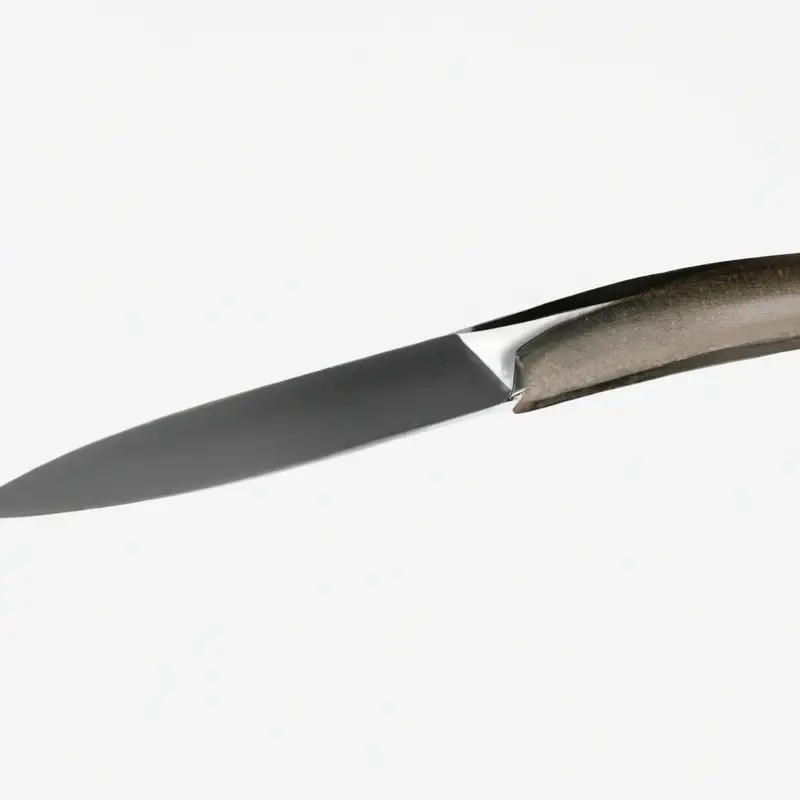
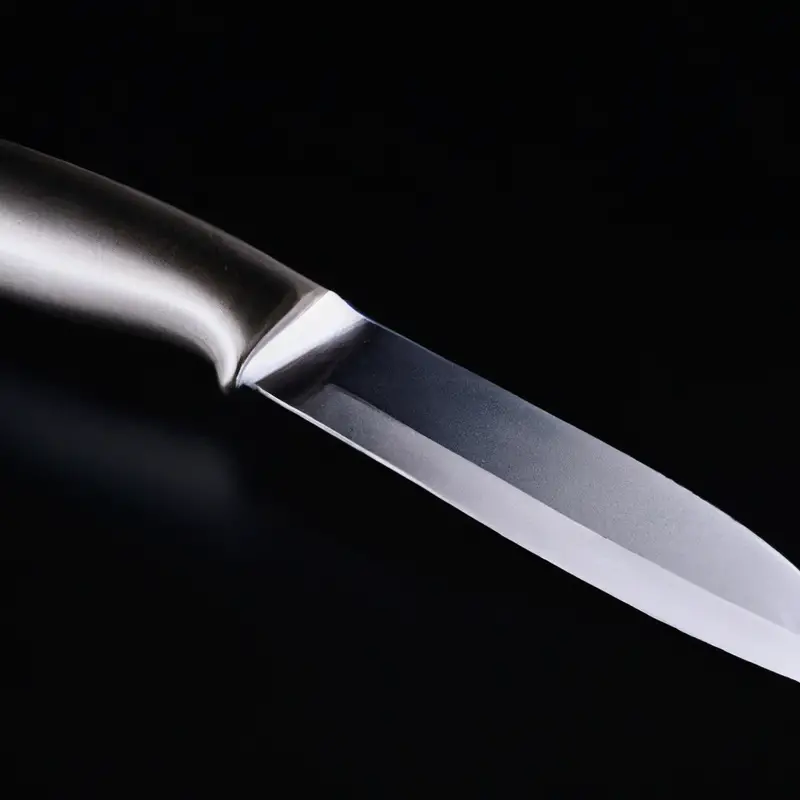
Final Verdict
Santoku knives are the optimal tool for cutting soft cheese, owing to their unique design and sharpness. Unlike other knives, Santoku knives preserve the integrity of soft cheese by cutting without crushing or mashing it.
Blade length and thickness play a crucial role in preventing sticking and sliding, while blade material impacts the overall performance and durability.
By following the maintenance tips, you can ensure that your Santoku knife cuts soft cheese perfectly every time. Before making a purchase, consider the price and quality to choose the right Santoku knife for your needs.
Overall, Santoku knives are a versatile tool that can also excel at cutting other food items, making them an indispensable part of your kitchen.
Trust in the reliability of this information and take advantage of the unique benefits that Santoku knives offer.

